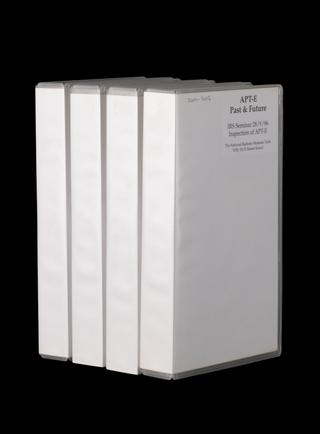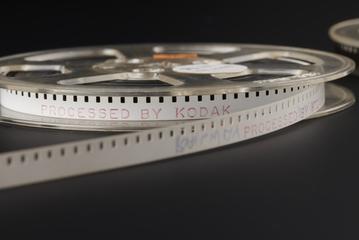
Original 16mm amateur film 'Australia, BEA Gibraltar, Railway Cynheidre'
- Made:
- circa 1960-circa 1970 in United Kingdom, Sydney and Gibraltar
800 feet metal reel, colour, silent footage. Reel starts with aerial shots of Sydney, Australia (view of Sydney Opera House - start of construction 1959, completed in 1973) ; black frames ; sunrise or sunset/night shots ; window view on board of train ; airport with Austrian Airlines planes ; shots taken through plane window showing sun, clouds and montains ; various views of Syndney shot from street level, Syndey bridge, including shots from parc behind Opera House showing cranes (Opera in construction), street/road view ; in parc ; shots through plane window, landing and taking off (leaving Sydney?)
Part 2 (after white leader): shots taken in Gibraltar, streets, views of the sea, house/architecture ; street, man with snakes (snake charmer?) ; shots taken from boat, filming Gilbraltar from sea ;
Part 3 (film cut, no splice): Gilbraltar, view from sea/boat ; Cliff on Gibraltar, monkeys, group of people looking at a monkey Part 4 (film cut, no splice): shot taken through plane window, Gilbratar landing? ; BEA (British European Airways) plane at airport, group of people gathering ; shots of a hotel ; group of pople (tourist) visit Gibraltar (streets) ;
Part 5 (film cut, no splice): railway, filmed from lineside, locomotive 1665 passing, hauling carriages, with people travelling inside opened freight wagons ?; shots taken on board train, window view plus view at back of the train of single line tracks
These reels of original amateur film footage were shot by William Herbert Glyn Thomas who was a Travel Agent, born in 1916, who passed away in May 1992. The films relate mainly to two topics: railways and travel abroad and were taken between mid-1960s and early 1970s, though not all railway footage, they document travel in all its forms and demonsrate the link between railways and leisure travel.
Details
- Category:
- Moving Images
- Object Number:
- 2017-7124/3
- Materials:
- acetate, plastic (unidentified), metal (unknown) and cardboard
- type:
- 16 mm film
- credit:
- Mr Glyn Thomas
